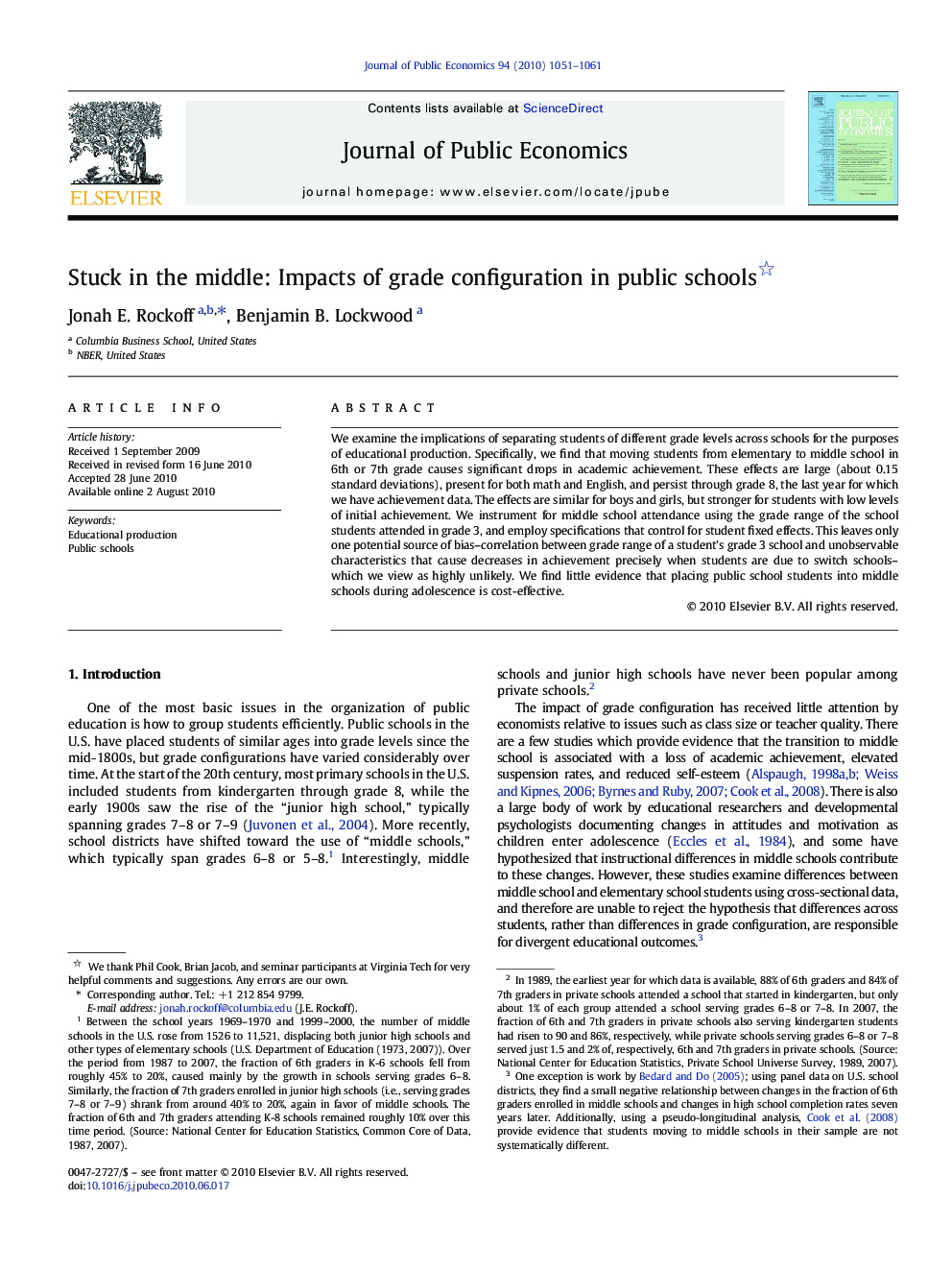| Article ID | Journal | Published Year | Pages | File Type |
|---|---|---|---|---|
| 969819 | Journal of Public Economics | 2010 | 11 Pages |
We examine the implications of separating students of different grade levels across schools for the purposes of educational production. Specifically, we find that moving students from elementary to middle school in 6th or 7th grade causes significant drops in academic achievement. These effects are large (about 0.15 standard deviations), present for both math and English, and persist through grade 8, the last year for which we have achievement data. The effects are similar for boys and girls, but stronger for students with low levels of initial achievement. We instrument for middle school attendance using the grade range of the school students attended in grade 3, and employ specifications that control for student fixed effects. This leaves only one potential source of bias–correlation between grade range of a student's grade 3 school and unobservable characteristics that cause decreases in achievement precisely when students are due to switch schools–which we view as highly unlikely. We find little evidence that placing public school students into middle schools during adolescence is cost-effective.
